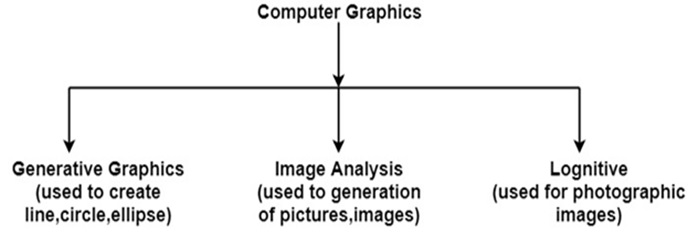Home »
Computer Graphics
Introduction to Computer Graphics
Computer Graphics | Introduction. In this tutorial, we are going to learn about the introduction to computer graphics, its history, definition, why are computer graphics used?
By Monika Sharma Last updated : April 05, 2024
History
The main forerunner sciences to the development of modern computer graphics were the advances in electrical engineering, electronics, and television that took place during the first half of the twentieth century when no technology was available.
Thus, screens could display art since the Lumiere brothers' use of mattes to create special effects for the earliest films dating from 1893 to 1895, but such displays were limited and not interactive with everyone. Then, the first cathode ray tube, the Braun tube, was invented in 1896 to 1897 – it, in turn, would permit the oscilloscope and the military control panel – the more direct precursors of the field, as they provided the first two-dimensional electronic displays that responded to programmatic or user input for anything.
Wherever, computer graphics remained used relatively unknown as a discipline until the 1950s and the post-World War II period – during which time the discipline emerged from a combination of both pure university and laboratory academic research into more advanced computers and the United State Military's further development of technologies like radar, advanced aviation, and rocketry developed during the war for protecting by everyone. So, new kinds of displays were needed to process the wealth of information resulting from such projects or work, leading to the development of computer graphics as a discipline for everyone to work properly.
Introduction
Computer Graphics involves technology to be accessed by everyone. Then, the Process transforms and presents information in a visual form for everyone. Thus, the role of computer graphics is insensible. Wherever today life, computer graphics has now become a common element in user interfaces, T.V. commercial motion pictures for everyone's entertainment.
Computer Graphics is the creation of pictures with the help of a computer for us. Then, at the end product of the computer graphics is a picture it may be a business graph, drawing, and engineering for working in it.
Mainly in computer graphics, two or three-dimensional pictures can be created that are used for research is used. Many hardware devices algorithms have been developing for improving the speed of picture generation with time rapidly. Then, it includes the creation storage of models and images of objects for view. Thus, these models for various fields like engineering, mathematics and many more.
Nowadays computer graphics are entirely different from the earlier one in many ways. It is not possible. Thus, it is an interactive user that can control the structure of an object of various input devices for this.
Definition of Computer Graphics
Computer Graphic is the use of computers to create and manipulate pictures on a display device by this. Thus, it comprises software techniques to create, store, modify, and represent pictures for everyone.
Why are computer graphics used?
Let a shoe manufacturing company want to show the sale of shoes for five years. Now, for this vast amount of information is to store in this. Then, a lot of time and memory will be needed for this. This method will be tough to understand by a common man by this. So, in this situation graphics are a better alternative. Thus, Graphics tools are charts and graphs for this. So using graphs, data can be represented in pictorial form for everyone. This is a picture that can be understood easily just with a single look.
This is an interactive computer graphics work using the concept of two-way communication between computer users in it. Thus, the computer will receive signals from the input device, and the picture is modified accordingly for this. Pictures will be changed quickly when we apply command.

Advertisement
Advertisement